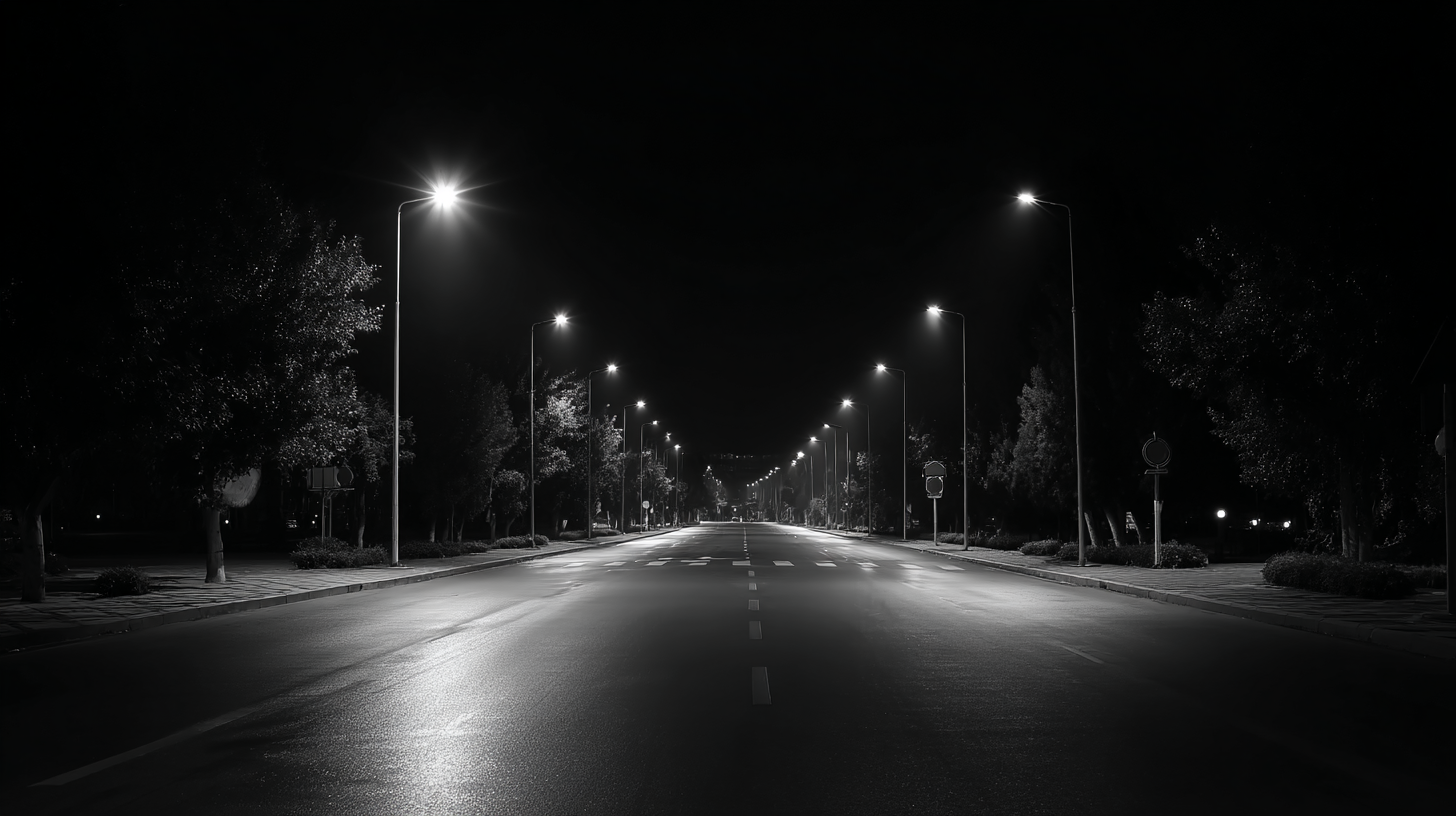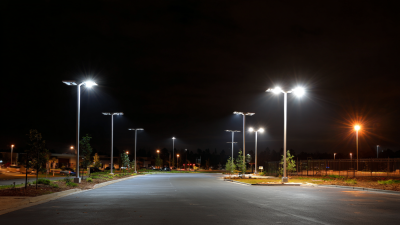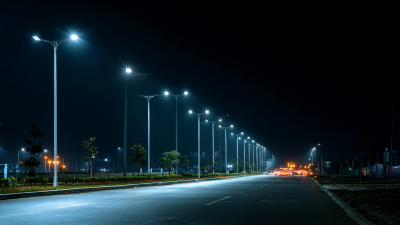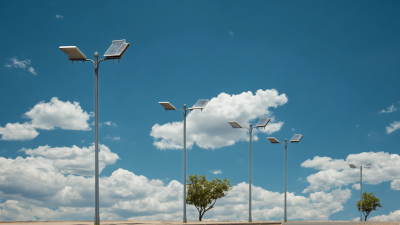Illuminate Your Path: The Future of Urban Safety with Solar Street Lights
As urban environments continue to expand, the necessity for enhanced safety measures becomes increasingly paramount. Solar Street Lights have emerged as a sustainable and effective solution to address this challenge. According to a report by the International Energy Agency, traditional street lighting contributes to approximately 19% of urban energy consumption, underscoring the need for innovative alternatives. Research indicates that cities implementing solar street lighting can reduce energy costs by up to 80%, while simultaneously decreasing carbon emissions and fostering safer communities.

Furthermore, municipalities adopting these eco-friendly solutions report a significant drop in crime rates, with studies showing that improved lighting can lead to a 30% decrease in outdoor crimes. As urban planners seek to create safer, more sustainable environments, the integration of Solar Street Lights stands out as a forward-thinking approach that promises to illuminate paths towards both safety and sustainability.
Innovative Technology: How Solar Street Lights Enhance Urban Safety
As urban environments continue to grow, enhancing safety for pedestrians and motorists becomes increasingly important. Innovative technology, such as solar street lights, plays a pivotal role in achieving this goal. These lights provide a sustainable and efficient lighting solution that not only illuminates dark areas but also reduces reliance on traditional electricity sources. By utilizing solar panels, these lights harness energy from the sun during the day, making them an eco-friendly choice that contributes to lower carbon emissions.
One notable advantage of solar street lights is their ability to improve visibility in high-crime areas. Better-lit streets deter criminal activities and instill a sense of safety among residents. Additionally, many solar street lights are equipped with smart technology, including motion sensors and remote monitoring systems, which ensure optimal performance and quick responses to any issues.
**Tips for Choosing Solar Street Lights:**
1. Assess the area’s specific lighting needs to select lights with adequate brightness for safety.
2. Opt for models with integrated smart features to enhance energy efficiency and security.
3. Ensure the installation is done in optimal locations to maximize solar exposure and effectiveness.

Economic Benefits: Cost Savings and Sustainability of Solar Solutions
The economic benefits of solar street lights extend far beyond their initial installation costs. By harnessing solar energy, municipalities can significantly reduce their electricity bills and maintenance expenses. Traditional street lights often require costly infrastructure, including wiring and ongoing energy costs, which can strain city budgets. In contrast, solar street lights operate independently of the grid, relying on renewable energy to power their LEDs. This self-sufficiency not only leads to immediate savings but also provides long-term financial stability as energy prices fluctuate.
Moreover, the sustainability of solar solutions aligns with global efforts to combat climate change. Utilizing solar energy reduces dependency on fossil fuels, decreasing the carbon footprint of urban lighting systems. Cities that invest in solar street lights contribute to a greener environment while promoting a positive image of sustainability. Additionally, many governments offer incentives for renewable energy projects, further enhancing the economic viability of solar street lights. By embracing these innovative solutions, urban areas can foster a safer, more sustainable future while reaping substantial economic rewards.

Environmental Impact: Reducing Carbon Footprint with Solar Energy
The increasing concerns over climate change and urban safety have made solar street lights an attractive solution for cities looking to improve their infrastructure while reducing their environmental impact. Utilizing solar energy, these lights provide a sustainable alternative to traditional street lighting, which often relies on fossil fuels. By harnessing sunlight during the day and converting it into electricity, solar street lights minimize carbon emissions associated with energy generation, ultimately contributing to a lighter carbon footprint for urban areas.
Moreover, the implementation of solar street lights not only conserves energy but also promotes the use of green technology in public spaces. This shift towards renewable energy enhances urban aesthetics and safety, creating well-lit areas that discourage crime and accidents. By investing in solar infrastructure, cities can lead the way in environmental stewardship and set a precedent for sustainable urban development. As municipalities adopt solar technology, they also encourage community awareness and participation in eco-friendly initiatives, fostering a culture of sustainability that resonates beyond just lighting solutions.
Carbon Emissions Reduction with Solar Street Lights
The following chart illustrates the potential reduction in carbon emissions achieved by transitioning from traditional street lights to solar street lights over a period of five years. The data demonstrates the significant positive environmental impact of adopting solar energy solutions in urban areas.
Community Engagement: Involving Citizens in Urban Lighting Solutions
In the quest for safer urban environments, community engagement plays a crucial role in the successful implementation of solar street lighting solutions. By involving citizens in the decision-making process, municipalities can ensure that the lighting aligns with the specific needs and concerns of the community. Residents can offer valuable insights into areas that require more illumination and suggest practical features, such as motion sensors or dimming capabilities. This collaborative approach fosters a sense of ownership and accountability among citizens, encouraging them to take an active role in maintaining public spaces.
Tips for Community Engagement:
1. Organize town hall meetings to discuss potential locations for solar street lights and gather feedback.
2. Utilize social media platforms to create polls or surveys, allowing residents to voice their opinions easily.
3. Offer workshops where community members can learn about solar technology and its benefits, promoting a sense of involvement.
Moreover, when citizens are informed and involved, they are more likely to support the initiatives that aim to enhance urban safety. Education plays a pivotal role; understanding how solar street lights work can dismantle misconceptions and highlight their positive impact on energy efficiency and sustainability. Engaging the community not only promotes transparency but also builds trust between residents and local authorities, ultimately leading to a more harmonious and well-lit urban landscape.
Future Trends: The Role of Smart Technology in Solar Street Lighting
As urban environments continue to evolve, the integration of smart technology into solar street lighting systems stands at the forefront of enhancing urban safety. According to Deloitte's latest
"Tech Trends 2025" report, the application of artificial intelligence (AI) is set to be more profound in everyday life, influencing various sectors including
urban infrastructure. Incorporating AI into solar street lights can enable real-time monitoring, adaptive lighting based on pedestrian activity, and energy-efficient management,
significantly contributing to safer cityscapes.
Furthermore, reports from the Massachusetts Institute of Technology reveal that the rise of young talent in AI is becoming a crucial driver for advancements in
smart city solutions. The potential of generative AI and its application in urban safety systems highlights an emerging frontier where technology
facilitates improved public safety through data-driven insights and rapid problem-solving capabilities. Imagining a future where streets are illuminated by responsive solar lights
that communicate with city management systems underscores the critical role of smart technology in shaping safer urban environments.
Related Posts
-

How to Optimize Solar Street Lights Outdoor for Maximum Efficiency and Cost Savings
-

Top Strategies for Sourcing the Best Solar Street Lights for Your Business
-

How to Choose the Right Solar Street Lights for Your Outdoor Needs
-

How to Choose the Best Solar Street Lights for Your Outdoor Spaces
-

Ultimate Solar Lamp Post Checklist: Ensuring Quality and Efficiency for Outdoor Spaces
-

How to Choose the Right Fence Lights: Illuminating Your Space with Safety and Style
